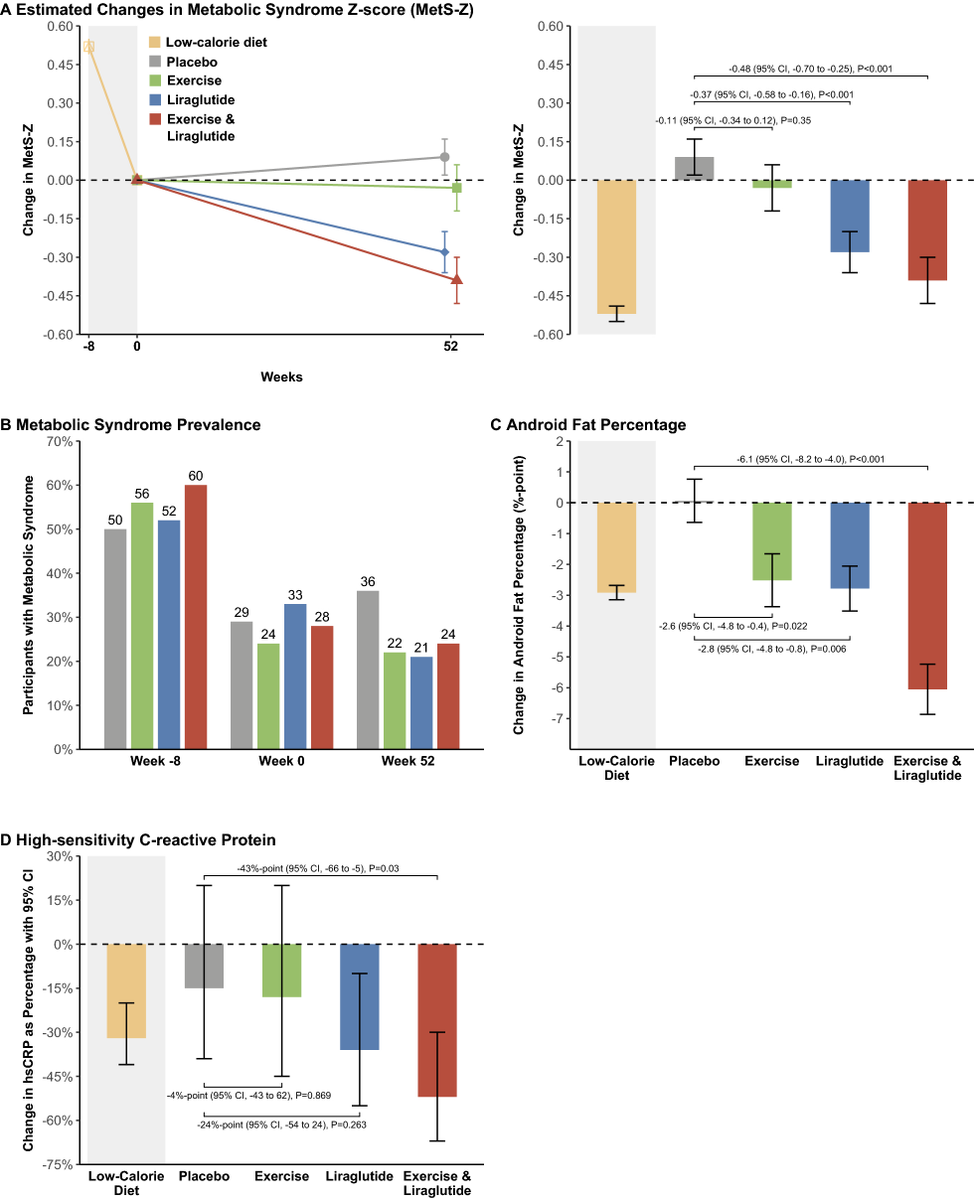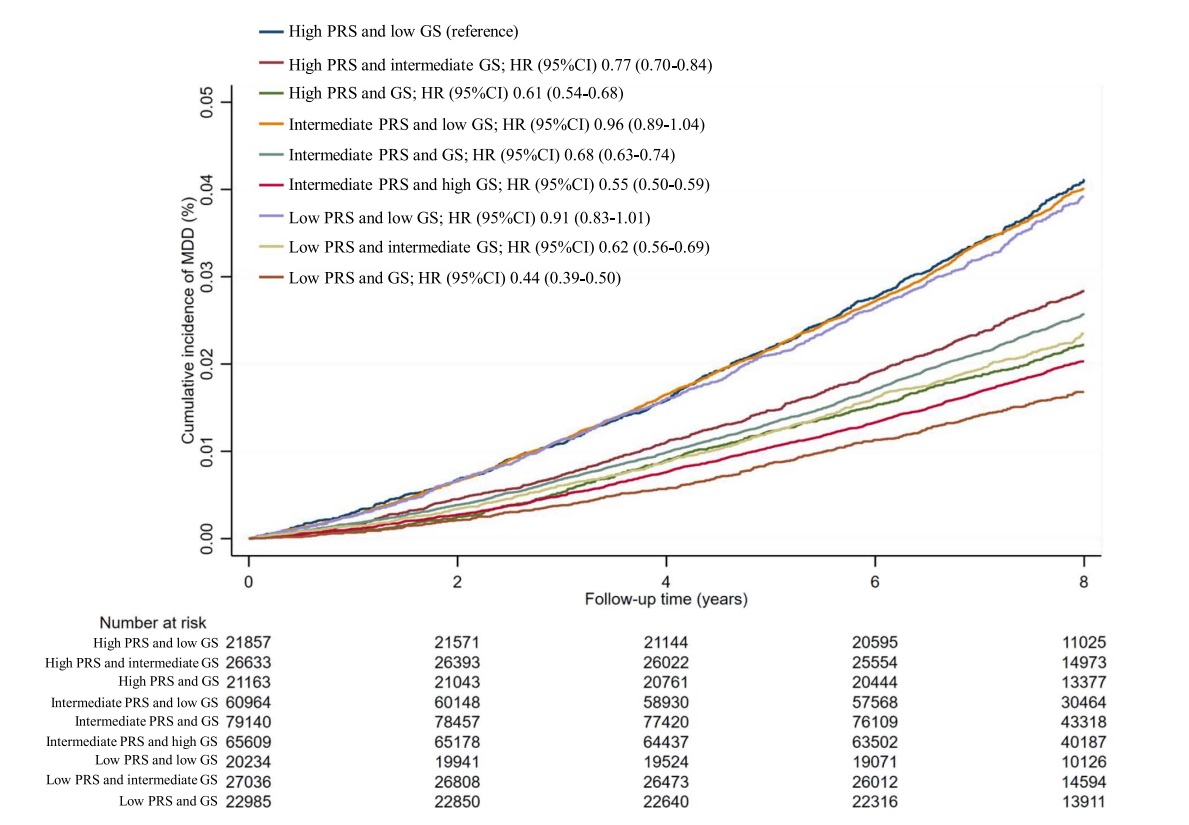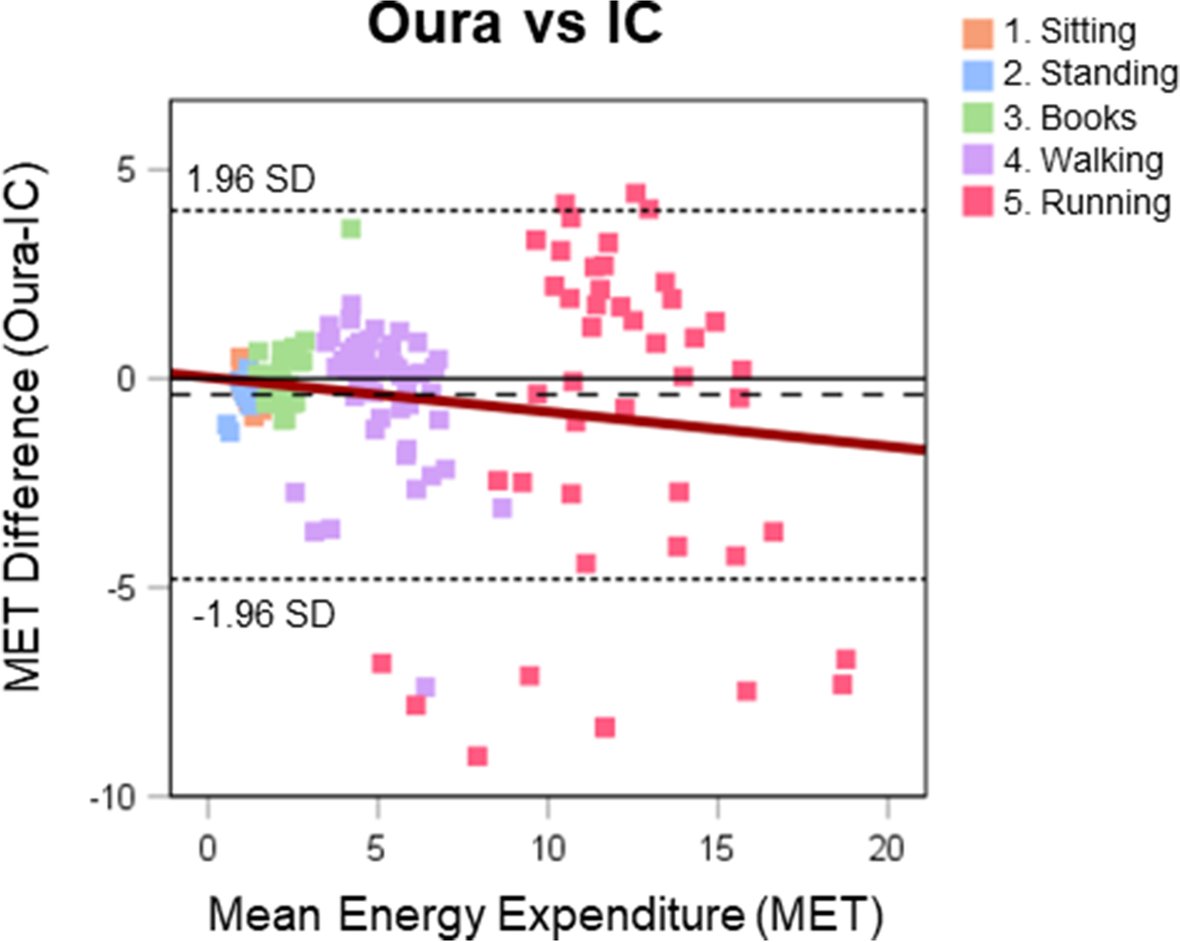
Here, the combination of exercise and a GLP-1 receptor agonist reduced metabolic syndrome severity, abdominal obesity, and inflammation following an eight-week low-calorie diet, consequently reducing cardiometabolic risk more than exercise or the GLP-1 receptor agonist alone. 

- The study investigated improvements in metabolic syndrome, abdominal obesity, and low-grade inflammation during moderate-to-vigorous exercise, liraglutide 3.0 mg/day, or the combination of the two following an eight-week low-calorie diet...
...in a one-year maintenance period following a diet-induced weight loss.
- Intervention with exercise further reduced abdominal obesity, liraglutide treatment further reduced MetS-Z and abdominal obesity, and liraglutide combined with adherent exercise further reduced MetS-Z, abdominal obesity as well as hsCRP compared to placebo.
- The combination treatment thereby reduced all outcomes compared to placebo, potentially providing the largest risk reductions of future cardiometabolic disease in an adult population with obesity.
Combination of exercise and GLP-1 receptor agonist treatment reduces severity of metabolic syndrome, abdominal obesity, and inflammation: a randomized controlled trial (open access)
doi.org/10.1186/s12933…
#weightloss #exercise #MetabolicSyndrome
doi.org/10.1186/s12933…
#weightloss #exercise #MetabolicSyndrome
• • •
Missing some Tweet in this thread? You can try to
force a refresh











